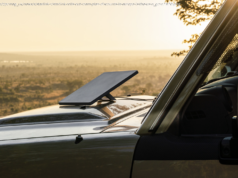The Fitbit Charge 3 is an update to the company’s most popular fitness tracker. Will a tweaked design, new features and more strap options make it the best activity band around? Here’s our hands on review.
The Fitbit Charge 3 is the updated version of the Charge 2, Fitbit’s most popular activity tracker to date. The Charge range has a slim design and core fitness features that appeal to many for the price and rich list of health-insight functions.
The Charge 3 takes what was good about 2016’s Charge 2 and makes it better by refining the fit, features and accessories to appeal to an audience that may not want to spend £200 or over on one of Fitbit’s smartwatches, the Versa and Ionic.
This is the tracker range that makes up 50 percent of Fitbit’s sales, and is the UK’s best-selling fitness tracker.
With a bigger, better screen in a lighter, waterproof form – but still winning on all the benefits that made the Charge 2 a bestseller – the Charge 3 looks like a formidable upgrade without spoiling what those 35 million loyal users love about the tracker.
We went hands-on with the Charge 3 prior to its release. Does it have what it takes to be the best Fitbit? Here are our first impressions.
The Fitbit Charge 3 is available for pre-order now but doesn’t get released until early October (with a firm date to be confirmed).
The base price for the Charge 3 is £129.99. You can pick from Graphite with Black silicone band or Rose Gold with Grey-Blue silicone band. This is actually £10 less than the retail price of the current Charge 2, although you can find that version cheaper online – see our Best Fitbit Deals for more savings.
A Special Edition Charge 3 adds NFC for mobile payments (Fitbit Pay) and costs £149.99. These come in Graphite with White band or Pink with woven band, and will ship even later than the regular versions.
Fitbit Pay isn’t widely compatible with banks in the UK right now, but is better in the US. If you’re not bothered by contactless payments via your wrist, the extra £20 just buys you an extra band, as the Special Editions also ship with a spare Black strap.
Perforated silicon Sports bands will be available as accessories for £24.99 each.
Fitbit was very keen to point out the aesthetic upgrade the Charge 3 has over older trackers, and it’s certainly more curved in places. It’s 20 percent lighter than the Charge 2 (which is hardly a beast), and we could tell the difference when holding both. The Charge 3 is made from aluminium rather
It sits on the wrist more snuggly to help improve heart-rate accuracy, but the heart-rate sensor isn’t as flush to the unit like it is on the Versa and Ionic.
This is because Fitbit is cramming a lot of sensors into a much smaller product. It’s even referring to the tracker itself as the « pebble », perhaps a reference to the company it acquired to help it push on to smartwatch market dominance.
The pebble is now made of aluminium rather than steel and is very lightweight. A notable change is an inductive rather than physical button on the left edge, marked only by an indentation. We found this button didn’t register a press every time, but we were working with pre-production units.
The vertical display is now 40 percent larger and fully touchscreen rather than only being able to react to taps. This allows you to scroll up, down and side to side through more detailed menus on a screen that can now display greyscale. Fitbit said this was to improve animations and daylight visibility.
The basic strap of the Charge 3 has a polygonal pattern, first seen on the Special Edition of the Charge 2.
Fitbit continues its slightly irritating trend of changing the strap and charger design with each new tracker, although here it’s the best strap release mechanism we’ve tested for a while – much less fiddly than the Versa and older Charge 2 are.
But this means none of your old Charge 2 straps are compatible with the Charge 3, and Fitbit is releasing Silicone perforated, Woven Heathered and Horween leather bands as accessories from launch – the latter at £59.99 and nearly half the cost of the tracker itself.
While only the keen-eyed will notice the new design of the Charge 3 on first glance, the tracker has saved the better upgrades for the inside.
Battery life: Fitbit claims the Charge 3 can run for up to seven days on a single charge. This is an important detail as it’s a product you are going to want to wear round the clock in order to get the best metrics out of it.
With this in mind, it’s the first Charge to be fully waterproof up to 50m, meaning showers and swimming are no issue and the tracker can record laps and distance in the pool, plus the duration of your swim.
Also, a Charge first is Auto Stop & Start, so your runs and activity are paused if you stop to take a breather halfway through, or get stopped at the lights. This is only during exercise though – you still have to manually start and stop a workout. It also features Auto Exercise Recognition.
Fitbit’s SpO2 sensor is included too, something the company claims in future updates will help track medical conditions like sleep apnoea and breathing difficulties. Software for more advanced sleep tracking is also promised before the end of 2018.
The Charge 3 is connected-GPS only, meaning you’ll still have to take your phone on that run if you want to record your route. The reason for leaving it out here is the physical limitations of a smaller tracker, and to keep the price down. The only Fitbit with built-in GPS remains the Ionic.
The Charge 3’s larger display is the best upgrade from the Charge 2. It is fully touchscreen and means you can interact quicker and easier with the OS. The greyscale tones make it less garish and subtler, which is welcome.
You’ll still need to use the inductive button to go back in menus, but you can now tap icons like on any other touchscreen where before pressing and holding a physical button was less user-friendly. The screen is built with Gorilla Glass 3 too, a decent level of scratch and shatter protection for such a small screen.
The software on the Charge 3 is like a mini port from the Versa and Ionic – indeed Fitbit is calling this its « smartest tracker », with even the promise of basic apps being added soon.
You can swipe down to view your unread notifications, of which there are many more (Caller ID, texts, Calendar, WhatsApp, etc). Charge 2 could only display calls, texts and calendar but now there is full support for all phone notifications. If paired with an Android phone you will also have access to Quick Replies when it is released.
You can even see your Fitbit Leaderboard right there on your wrist.
The Fitbit Charge 3 adds greater detail to your sleep analysis, with the full Sleep Stages information rather than the old 2’s more basic sleep stats.






